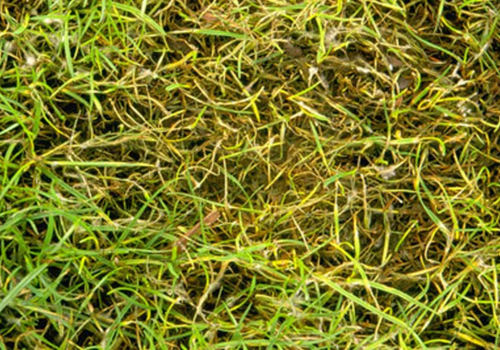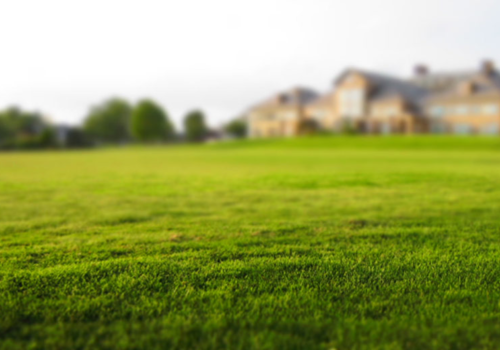Moss can be a persistent problem in lawns, creating an unsightly and uneven surface. While moss itself is not harmful, it competes with grass for space, moisture, and nutrients, leading to a weaker, patchy lawn.
Understanding Why Moss Grows
Before attempting to remove moss, it’s crucial to understand why it appears in the first place. Moss thrives in conditions where grass struggles to grow. Common factors that encourage moss growth include:
Poor drainage - waterlogged soil provides the perfect environment for moss.
Excessive shade - lack of sunlight prevents grass from growing while allowing moss to spread.
Acidic soil - moss thrives in low-pH (acidic) soil, whereas grass prefers a neutral to slightly alkaline pH.
Compacted soil - hard, compacted soil reduces air circulation and water absorption, making it difficult for grass to establish roots.
Nutrient deficiency - poor soil fertility weakens grass, giving moss an opportunity to dominate.
How to Get Rid of Moss in Your Lawn
Once you’ve identified the cause of moss growth, you can take the necessary steps to remove it and prevent it from returning. There are several ways of approaching moss control which involve dealing with the moss itself while also addressing the underlying soil and drainage issues.
Manually Removing Moss
A simple way to eliminate moss is by raking it out. Use a garden rake or a specialised moss rake to pull up the moss from the surface. This is best done when the moss is dry, making it easier to remove. Use our guide to scarifying your lawn without a scarifier to find out how. However, manual removal alone will not solve the underlying issues, so additional steps are needed.
Applying Moss Killer
Moss killer treatments are available to help eliminate moss. At Boston Seeds, we supply KissMyGrass Lawn Revivor and Moss Destroyer which will blacken the moss thanks to its high iron content, making it easier to remove. At the same time, it will dramatically improve the appearance of your grass, turning it a deep, green colour.
Improving Lawn Drainage
If poor drainage is the problem, consider aerating your lawn to improve water flow. Aeration involves perforating the soil with small holes to allow air, water, and nutrients to reach the grass roots. You can use a manual aerator, spiked shoes, or a powered aerator for larger lawns.
Adjusting Soil pH
Moss prefers acidic soil, so testing your lawn’s pH level can help determine if this is a contributing factor. You can purchase a soil test kit from a garden centre. If the pH is too low (acidic), applying garden lime will help raise the pH, making conditions more favourable for grass and less suitable for moss.
Reducing Shade
If moss is growing in shaded areas, consider pruning trees or shrubs to allow more sunlight to reach the grass. If this is not possible, planting a grass seed for shaded lawns, such as BS Shady Place Grass Seed is ideal. Developed to produce quality turf in shaded areas, this grass seed for shade can help maintain a healthy lawn in dry shaded areas and areas of low fertility.
Overseeding and Fertilising
After removing moss, overseed your lawn with a quality grass seed to fill in bare spots like BS Renovator - Lawn Repair Grass Seed. Follow this by applying a balanced fertiliser with a good iron content like KissMyGrass Premium Spring & Summer Lawn and Sportsfield Fertiliser 12.5.5+ which will encourage strong, healthy grass growth, making it harder for moss to re-establish itself.
Regular Lawn Maintenance
To keep moss at bay, establish a regular lawn care routine that includes:
• Mowing at the right height - avoid cutting the grass too short, as this weakens it. A height of about 2.5 to 3 inches is ideal.
• Watering properly - water deeply but infrequently to encourage strong root growth.
• Feeding your lawn - apply a seasonal fertiliser to provide essential nutrients. KissMyGrass Spring and Summer Boost Liquid Lawn Fertiliser can be applied from March to August, while KissMyGrass Autumn & Winter Vitality Liquid Lawn Fertiliser is ideal for application between August and November.
Preventing Future Moss Growth
Once you have brought the moss in your grass under control, the best way to prevent it from returning is to maintain a healthy lawn. By addressing drainage issues, keeping the soil pH balanced, and promoting strong grass growth, you can create conditions that favour grass over moss.
Moss Control from Boston Seeds
It is crucial to deal with moss as soon as it appears (usually in the spring or autumn) to avoid problems including stunted growth in your grass. We offer a range of effective moss control and lawn fertiliser, and our Lawn Fertiliser Advice & Tips is full of helpful articles. And of course our team of experts is on hand to offer advice; simply email the team or give us a call on 01205 280 069.


